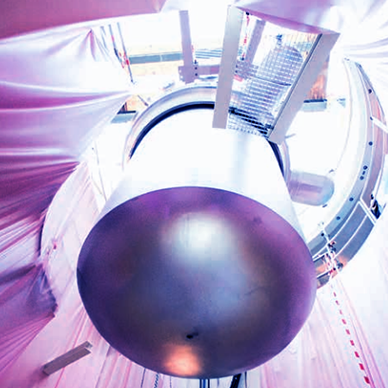
The RES: a nuclear propulsion test reactor

Nuclear reactors used to generate electricity can also be equipped with on-board instruments to perform online measurements during operation. This valuable data is then used to improve our computer tools and know-how in the nuclear field.
However, this is not the case for on-board nuclear reactors. They are not designed to host measuring instrumentation. This is why the CEA built a test reactor facility so it could carry out studies in this specific area. This facility is located at the CEA Cadarache centre. It includes various measuring instruments, a pool and a workshop all used to study this type of reactor and its fuel. The objective is to optimise the current and future nuclear steam supply systems for nuclear propulsion.
The mission statement for the RES is to support the fleet in service, to qualify the fuel and cores of on-board NSSS, to develop and qualify technical innovations for tomorrow’s nuclear propulsion, and to safeguard know-how in this field.